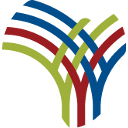The assessment includes contributions from the African Development Bank. WRI also launches Green-Gray Infrastructure Accelerator, supporting 11 African cities in building climate resilience.
A new report by World Resources Institute (WRI) and the World Bank, with contributions from the African Development Bank (AfDB), provides one of the most comprehensive assessments to date on how Sub-Saharan Africa — one of the world’s most climate-vulnerable regions — is turning to nature to combat mounting risks of flooding, drought, and extreme heat. Growing Resilience: Unlocking the Potential of Nature-Based Solutions for Climate Resilience in Sub-Saharan Africa analyzes nearly 300 projects over the past decade to identify what works, key barriers, and strategies to scale up nature-based solutions (NBS) to promote green, resilient development.
The report shows a steady increase in the adoption of NBS projects, with the number of new projects initiated growing by an average of 15% annually between 2012 and 2021. These projects — which include protecting and restoring forests, wetlands, floodplains and coral reefs, often in combination with traditional “gray” infrastructure — are strengthening climate resilience while actively delivering co-benefits like job creation, biodiversity enhancement and social equity.
While interest in NBS is growing, the report finds that more investment is needed. Between 2012 and 2021, funding for NBS projects in Sub-Saharan Africa increased by 23% annually and raised more than $12 billion. While this is a positive step, the figure pales in comparison to Africa’s $100 billion annual infrastructure financing gap.
“Nature loss and climate risks are inherently linked, especially here in Africa,” says Qimiao Fan, World Bank’s Country Director for Kenya, Rwanda, Somalia and Uganda. “We need to ensure that projects and policies comprehensively address the challenges and offer inclusive and effective solutions for the most vulnerable groups.”
As climate risks like extreme heat, flooding and water scarcity intensify, Sub-Saharan Africa stands at the frontlines of the global climate crisis, with Kenya’s floods and unprecedented heatwaves across the region a stark warning.
The report highlights several recommendations to increase adoption of NBS in the region. These include integrating nature into policies and plans, building technical capacity to develop project pipelines, and diversifying finance.
While NBS projects are growing, a critical gap remains: relatively few projects were implemented in cities, despite their potential to address urban challenges (though the World Bank and AfDB have recently been supporting more urban projects). Seventy percent of African cities face severe climate risks — including flooding, extreme heat and mudslides — while many already struggle with inadequate infrastructure. Additional investment in traditional solutions like dams and engineered drainage is needed, but integrating natural infrastructure, such as restoring and protecting forests in watersheds, can bolster resilience and reduce long-term costs.
Recognizing this, and to complement NBS investment preparation efforts of the World Bank and AfDB, WRI is launching the Green-Gray Infrastructure Accelerator, an initiative to support 11 cities across sub-Saharan Africa to integrate NBS with traditional “gray” infrastructure. The initiative will provide technical, policy and finance support, helping them lay the groundwork for their initial cohort of projects, while connecting others to financiers to scale existing efforts.
“We often think of infrastructure in terms of roads, bridges and buildings — just concrete and steel structures,” said Ani Dasgupta, President & CEO, World Resources Institute. “But nature — forests, trees, wetlands, coral reefs — is just as vital. It supplies clean water, protects communities from disasters, and strengthens resilience. Across Africa, cities and communities are proving that green and gray infrastructure can work together to maximize benefits for people, nature and climate — and the world should take note.”
Note: This report was jointly prepared by the Cities4Forests initiative at World Resources Institute and the Global Facility for Disaster Reduction and Recovery (GFDRR) at the World Bank, with key contributions from the African Development Bank (AfDB), support from the Green Growth Knowledge Partnership (GGKP), and funding contributions from the Swedish International Development Cooperation Agency (SIDA), the MAVA Foundation, GFDRR, the German Agency for International Cooperation (GIZ), the German Federal Ministry for Economic Cooperation and Development (BMZ), and the Danish International Development Agency (DANIDA).
About World Resources Institute
WRI is a trusted partner for change. Using research-based approaches, we work globally and in focus countries to meet people’s essential needs; to protect and restore nature; and to stabilize the climate and build resilient communities. We aim to fundamentally transform the way the world produces and uses food and energy and designs its cities to create a better future for all. Founded in 1982, WRI has nearly 2,000 staff around the world, with country offices in Brazil, China, Colombia, India, Indonesia, Mexico and the United States and regional offices in Africa and Europe. More information at www.wri.org.
About World Bank
The World Bank Group is one of the world’s largest sources of funding and knowledge for developing countries. Our five institutions share a commitment to reducing poverty, increasing shared prosperity, and promoting sustainable development.
About the Global Facility for Disaster Reduction and Recovery (GFDRR)
GFDRR is a global partnership that helps low- and lower-middle-income countries better understand and reduce their vulnerabilities to natural hazards and adapt to climate change. GFDRR provides grant financing, technical assistance, training, and knowledge sharing activities to mainstream disaster and climate risk management in national and regional policies, strategies, and investment plans. The Program Management Unit, located within the World Bank, manages grant resources to carry out GFDRR’s mission.


